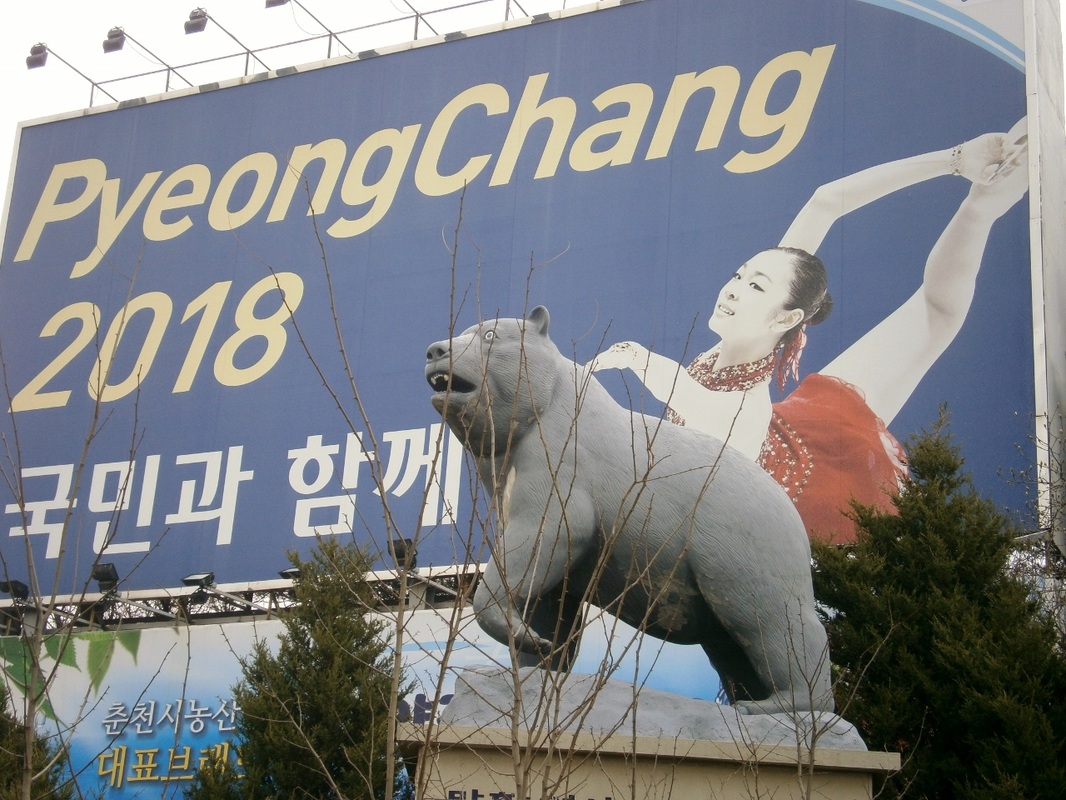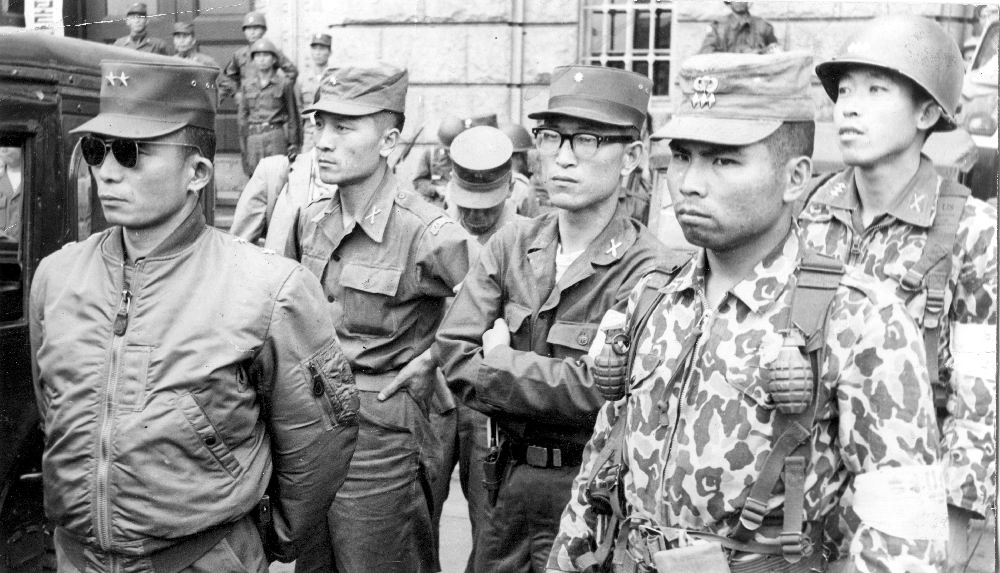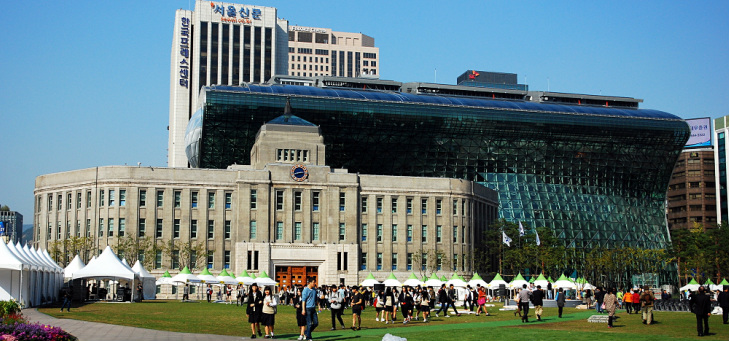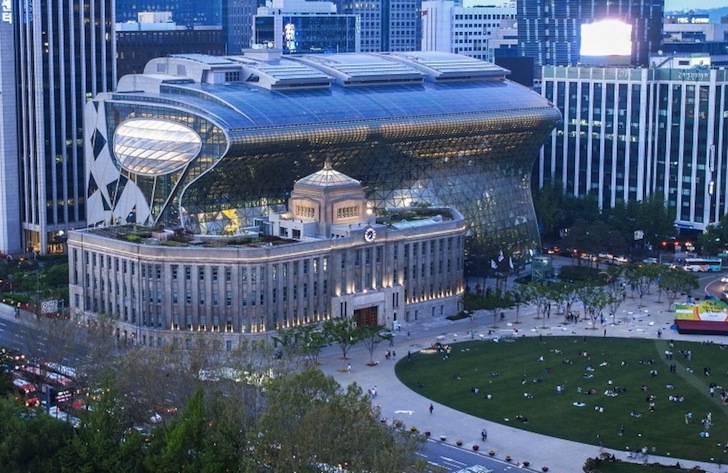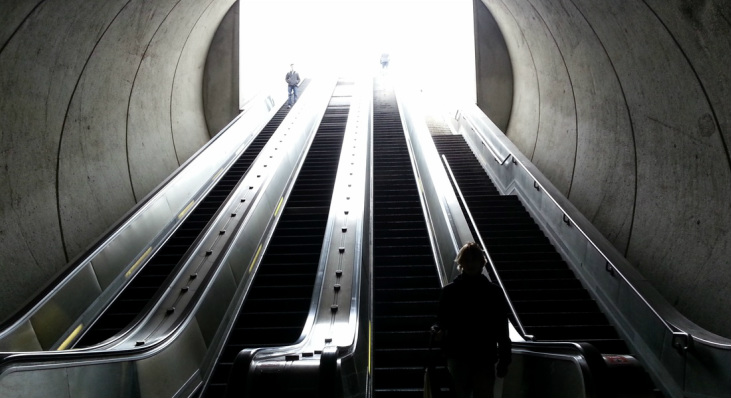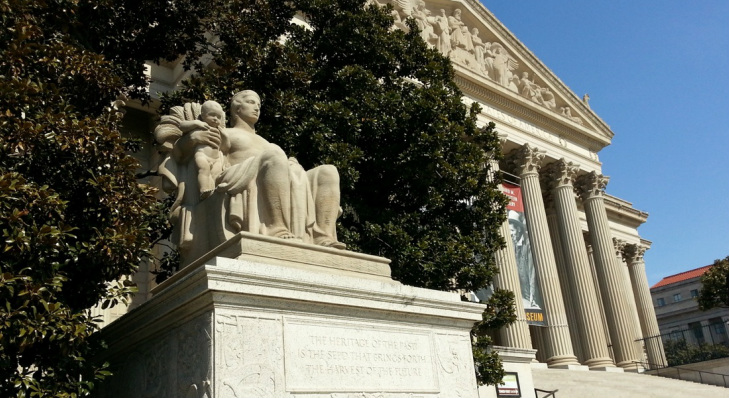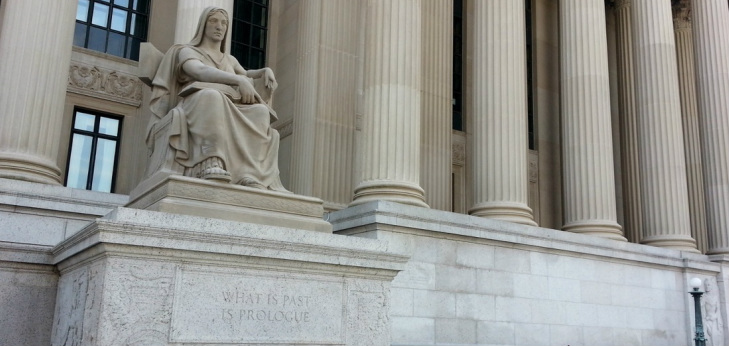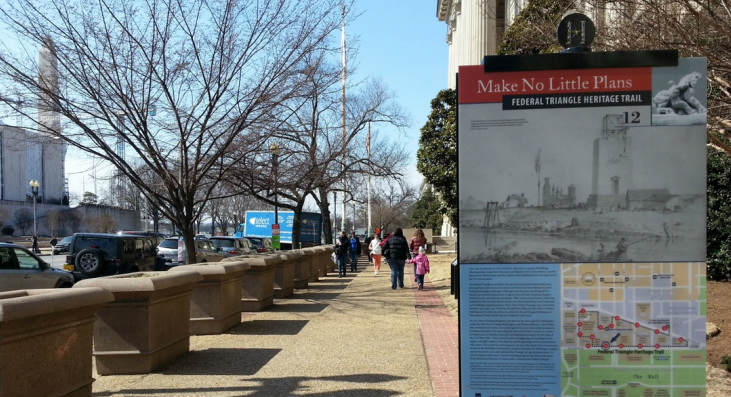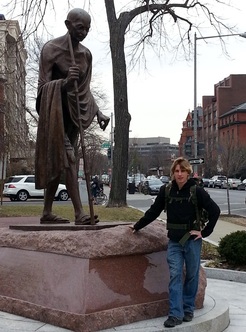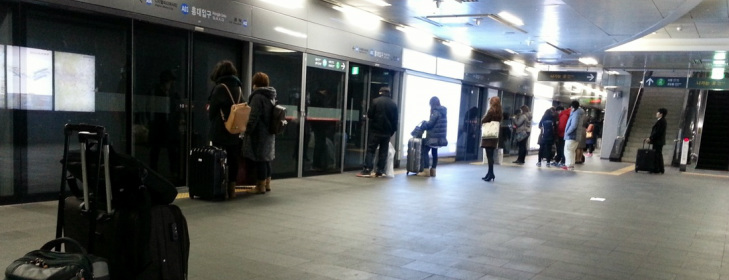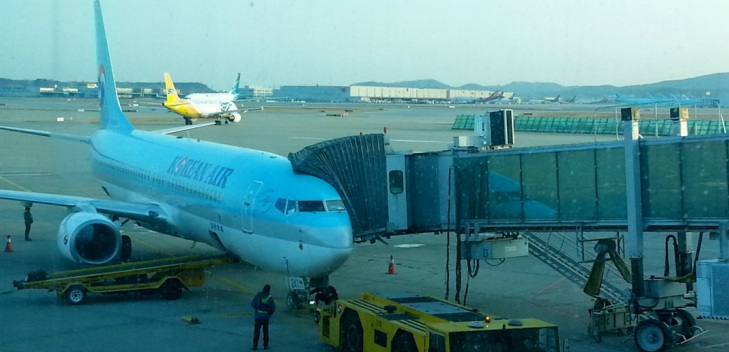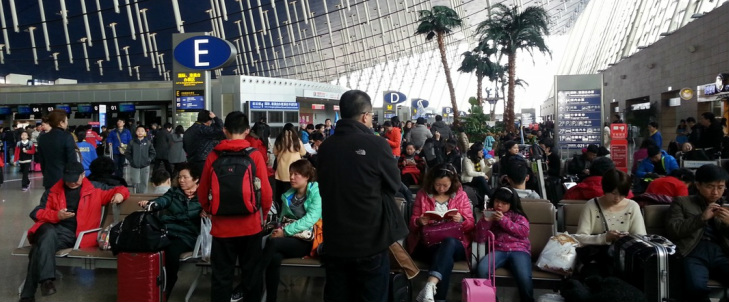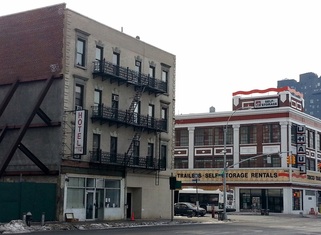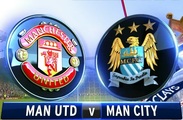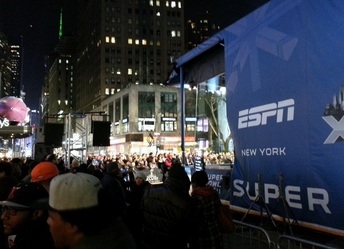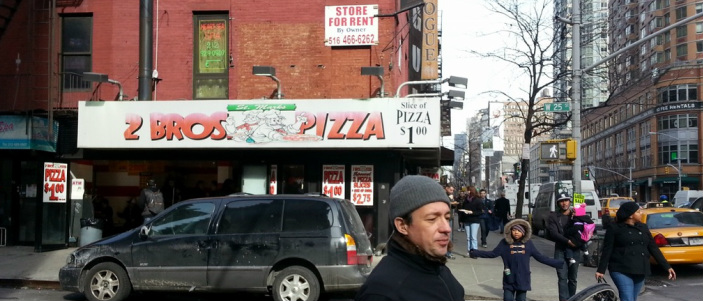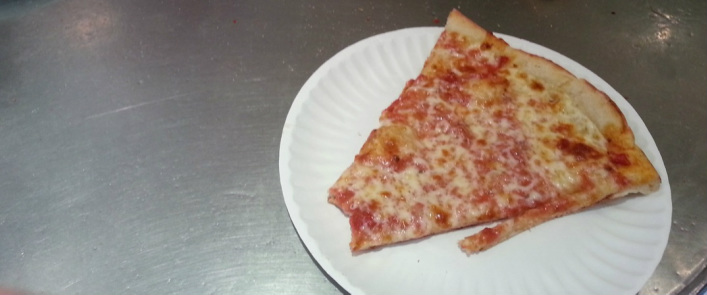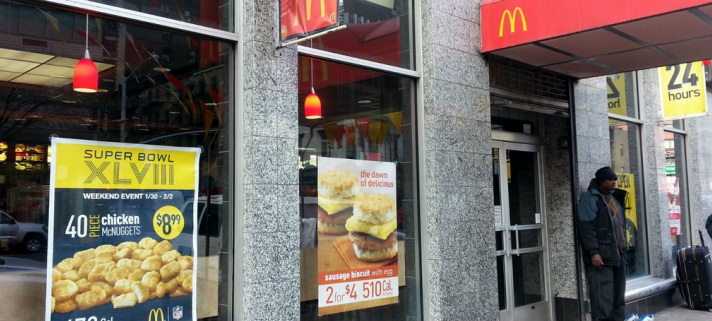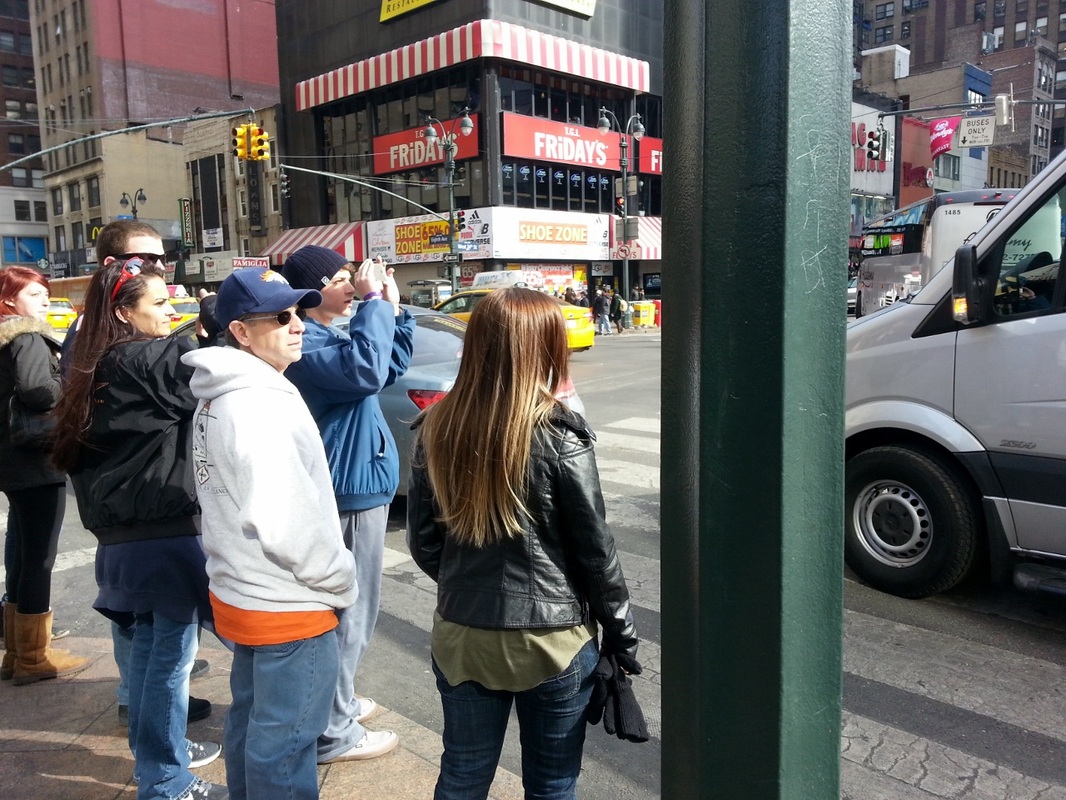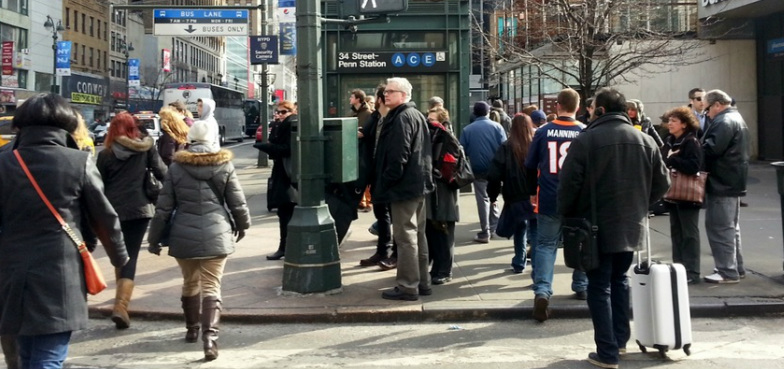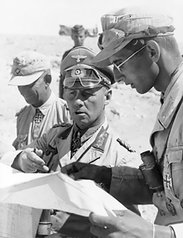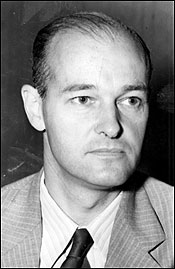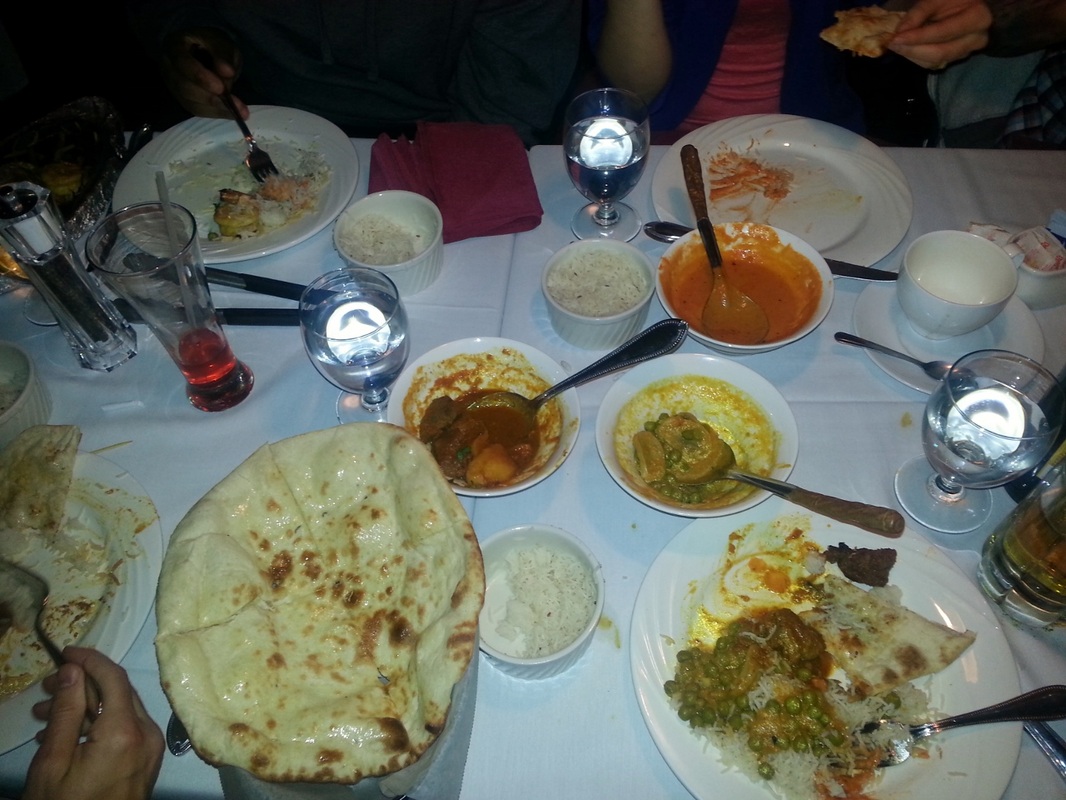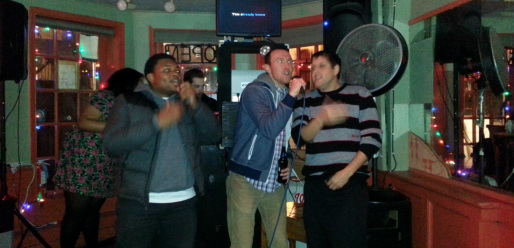Here is a billboard I saw about a year ago, while visiting Gapyeong (가평) (see post-15), near Chuncheon (춘천):
Month: March 2014
bookmark_borderPost-207: Seoul City Hall, 1961 vs. 2014 (Or, Why Does Seoul’s New City Hall Look So Strange?)
General Park successfully seized control of Seoul in the pre-dawn hours. Victorious, he posed for photographs that very day in front of Seoul City Hall:
Here it is today. See the same doors?
But why did they make the New City Hall such a weird shape?
A tidal wave of futuristic fury, splashing over the dusty-looking old City Hall. That’s how it looks to me. I interpret it to be meant as a metaphor for South Korea moving into a new world, washing away its historical “baggage” of War, Dictatorship, Terror, Foreign Occupation, and Economic Misery. Those are things that Koreans feel defined the majority of the period during which that stone building served as City Hall. All have been washed away by the unstoppable tide of Korean progress and advancement towards status as a global leader (…is the idea).
Certain angles make this “tidal wave” visualization very clear:
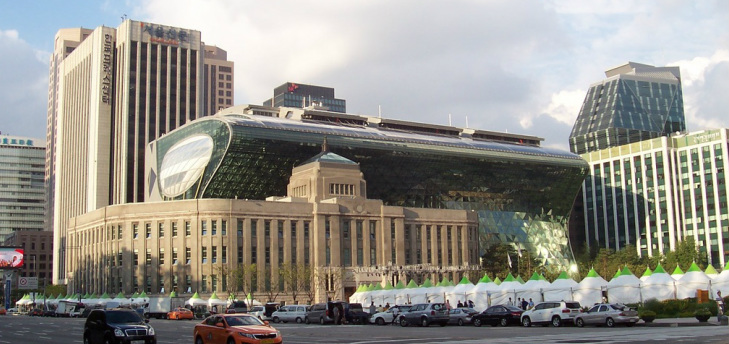
bookmark_borderPost-206: Ballad of Forty Dollars
The tune, the lyrics, the “Americana”; all are appealing.
I like that it tells a story. I just can’t figure out “the moral of the story” (if any). Can you?
The Osborne Brothers [1972]
Well, the man who preached the funeral
Said it really was a simple way to die
Well, he laid down to rest one afternoon
And never opened up his eyes
They hired me and Fred and Joe
To dig the grave and carry up some chairs
And I guess we must’ve drunk a case of beer
I guess I oughta go and watch them put him down
But I don’t own a suit
Anyway, when they start talking about the fire and hell
Well, I get spooked
So I’ll just sit here in my truck
And act like I don’t know it when they pass.
Anyway, when they’re all through
I’ve got to got to work and mow the grass.
Well, here they come
And who’s that riding in that big old shiny limousine!
Mmmm…Look at all that chrome
I do believe that’s the sharpest thing I’ve seen
That must belong to his great-uncle,
Someone said he owned a big old farm
When they get parked, I’ll mosey down and look it over
That won’t do no harm!
Well, that must be the widow in the car
And would you take a look at that!
That sure is a pretty dress,
You know, some women do look good in black
Why, he’s not even in the ground,
And they tell me that his truck is up for sale
They say she took it pretty hard,
But you can’t tell too much behind the veil
Well, listen ain’t that pretty
When the bugler plays the military taps
I think that when you was in the war
They always try and play a song like that
Well, here I am and there they go
I guess you’d just call it my bad luck
I hope he’ll rest in peace
The trouble is, the fella owes me forty bucks!
bookmark_borderPost-205: Into the National Archives
We finished our post-CELTA celebratory events about 11:20 PM on Friday Feb. 28th (see post-200). To the subway. On to home, for the others. Not me. For me, it was on to the bus station. There, I found a recently-arrived J.S. leaning up against a post, backpack at his feet. It was 11:55 PM. As the clock ran out on the month of February, J.S. and I were maneuvering down into the subway. Back to Arlington. Sleep.
Into the Metro again, in the morning:
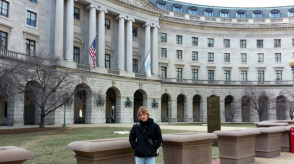 J.S. in front of the “Clinton Building”
J.S. in front of the “Clinton Building”
The Archives is (are?) nearby.
This was also my first time seeing the founding documents of the USA, even though I was born and raised just a few miles away. They’re right there (at the National Archives, near the U.S. Capitol).
Here is the very romanesque front of the National Archives:
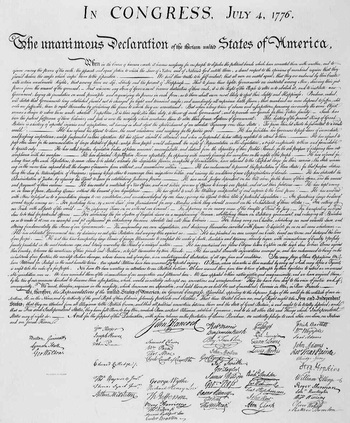 U.S. Declaration of Independence, 1776
U.S. Declaration of Independence, 1776
(Replica of original [Found online])
It seems to me that very many Americans feel that the Declaration of Independence and so on are, at some level, “sacred”, even “divinely inspired”. In a much more primitive society, maybe we would actually worship Jefferson and Washington and so on, as gods, today. The feelings people have towards them “draw water from the same well”.
__________________________________________________________
J.S. posed a good question: If what they have on display is the “original” Declaration of Independence that was sent to the King in 1776, to legally secede from the British Empire, “how’d they get it back?” I have no answer.
J.S. went off to look at other exhibits. I spent a considerable amount of time slowly reading a replica of the Declaration of Independence. The original cursive is a bit hard. People younger than I won’t be able to read these originals at all, if it’s true that “they” don’t teach cursive anymore.
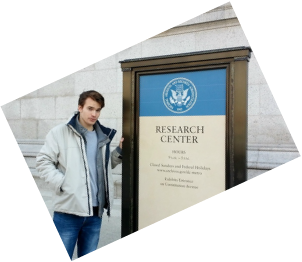 At the National Archives Research Center
At the National Archives Research Center
The rear side is the Research Center entrance. We went back there, too, thinking to look at microfilms of censuses. Why not?
That Research Center has a strange atmosphere: One part library, one part airport-security-area, two parts prison.
Sign in, get ID card, go through airport-style security, all amid suspicious glares. We did it all. The process took so long that we had to leave before entering the main area. Off to meet A.W.F. & P.F….
bookmark_borderPost-204: Through NYC on Superbowl Weekend 2014
It started like this:
I arrived on Friday, Jan. 31st (Chinese New Year). Two days later was the Superbowl, an event I beheld with such indifference that I didn’t even know that it was being held in New York City till after my arrival.
In fact, grey, dreary, angry, arrogant New York was not quite as grey, dreary, angry, and arrogant as usual: The festive mood of the Superbowl lifted things up, I think.
The Superbowl! It’s not quite super enough for non-Americans to care even the smallest bit, though….
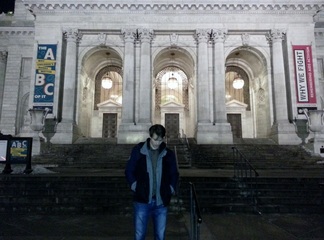 In front of New York Public Library
In front of New York Public Library
Two or three hours after leaving the airport arrival area, I arrived at “Neck Road” and met T.A. We walked around Manhattan that evening, as in my previous visit. He took my picture in front of the famous NY Public Library (at right), catching me looking down.
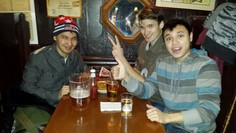
In our parents’ or grandparents’ generations, Americans and “Soviets” were officially enemies. The three of us are too young to actually remember.
It was alluring. I returned the next day (Saturday), alone, in the hours before my bus departed. I walked the entire length. Broadway was converted, that week, into “Superbowl Avenue”, filled with football-related attractions, prize giveaways, tents full of video games to play (with the latest football games), and a lot of other stuff along those lines. Most excitingly was the free “Superbowl pizza”, whatever that is. I didn’t get any on account of the “super”-long line.
I didn’t watch more than ten minutes of the Superbowl.
bookmark_borderPost-203: With Rommel, in Good Humor
Rommel called on a fat Italian major who was commanding one of the road-construction battalions. […] The rotund major…was a…vivacious fellow, and kept us smiling. Rommel asked him whether there were any complaints. The major replied excitedly: “Si, si, Signor, Generale, the food is very monotonous and the vino is not good!”
Rommel looked with a mischievous smile at the fat little figure and murmured gently: “And yet it does not seem to be doing you any harm!” [From Chapter 13]
For a war memoir, the book is surprisingly light in tone, peppered with that “German humor” like Rommel’s above remark to that Italian major.
Here is another example. Flies were all over North Africa. Schmidt (the author), e.g., tells a general visiting from Berlin that “the unbearable part of the life [in North Africa] is the aggression of millions of flies. They settle on the food in thousands […]” [ch.9]. The author relates a farcical scene at the headquarters of one of the Afrika Korps’ constituent divisions. Picture this, sometime in 1941 (In the serious context of a German field command center!) —
I was made at home in the 5th Light H.Q. mess. On an inside bulkhead of [General] Streich’s Mammoth [a large armored vehicle serving as a mobile headquarters] I noticed a large Knight’s Cross made of cardboard. But instead of the usual central swastika, it carried a sketch of a large black fly. Hauser explained to me that the Knight’s Cross was awarded ceremoniously every evening to the inmate of the Mammoth who had ‘shot down’ the largest number of the pestilential Desert flies during the day. I could understand their preoccupation with this unpleasant diversion, but I also began to appreciate Rommel’s more single-minded insistence that his subordinates should display initiative, aggressiveness, and ‘hardness’ in the face of the enemy. He had no time for frivolity.
[Rommel] had just one recreation — swatting flies. Daily during the lunch hours he dedicated himself to the task of systematically destroying as many of these pests as possible. [Ch.11]
Here is another. Rommel was called to Rome to celebrate his 49th birthday in November 1941. The author narrates:
They [Rommel, his wife, and close confidant General Ravenstein] attended the Opera [in Rome]. General von Ravenstein told me after the war that, as they emerged from listening to glorious singing, Rommel turned to him in the foyer and discussed not opera but, at once, what had obviously been engaging his thoughts: “Von Ravenstein, we must shift those battalions in the Medawwa Sector…” [Ch. 17]
One day a large parcel of books arrived from her. Rommel asked me to take them to the troops at Halfaya [on the Egypt-Libya border; the frontline]. I examined the books and was amused to note that they consisted entirely of “trashy literature” of the type that those who managed the Third Reich had condemned as fit only for the bonfire of the Decadent Democracies.
bookmark_borderPost-202: Pollution Wave in Seoul, Feb.-March 2014
Having been in the USA since January 31st 2014, I missed the most recent episode of this, which was big, sustained. I saw my friend Jared mention it. The “Air-Korea” website confirms it. Pollution data easily accessible there.

It’s in the 60s Fahrenheit (15-20 C) here in Arlington, Va., as I write, after snow last week. I’m pretty sure that most places in the USA (including Arlington) would have blue boxes on the above chart most every day.
bookmark_borderPost-201: George Kennan and the Question of “Loyalty of Principle”
He was in the U.S. foreign service in the 1920s-1940s, ambassador to the USSR for a time, a great linguist, and a great thinker; a brilliant man. He was one of the USA’s foremost experts on European affairs, especially Russian affairs. His wife was Norwegian. He drew up the USA’s “containment” doctrine and the Marshall Plan, essentially laying the groundwork for fifty years of U.S. policy in Europe (which became anachronistic after 1991 but sort continued on in mutated form anyway; I wonder what Kennan thought about the interventions in Yugoslavia? Kosovo? Crimea?).
Kennan was one of the only voices in the U.S. government in 1945 and early 1946 who warned that Stalin was not to be trusted, that Stalin was aggressive and intransigent.
It sounds like Kennan was a “good old fashioned” American patriot. He was not. Recently I read (some of) a book called George Kennan: A Study of Character by John Lukacs (2007). In it, we see that Kennan actually grew to dislike the USA:
What [George Kennan] saw [from the 1930s onward]…was no longer a world of his. He would, because he must, remain loyal to his country. “But it would be a loyalty despite, not a loyalty because, a loyalty of principle, not of identification.” [quoted text was written by Kennan in the 1960s]
He [Kennan] blamed much on the automobile. He found a civilization dependent on automobiles deleterious. He remembered one of his professors in Princeton who explained that railroads, coming into the centers of towns, contributed to the growth of an urban civilization, while the asphalt roads extruding from cities lead to their dissolution.
Still — whether “despite” or “because” — there could be no question of [Kennan’s] loyalty to the Foreign Service. …[T]here was, too, a puritanical streak in Kennan’s character: a categorical imperative of duty.
Fareed Zakaria, U.S. media darling, wags his finger disapprovingly at recently-revealed comments made by Kennan:
Writing on a flight to Los Angeles in 1978, Kennan thinks about how few white faces he will see when he lands and laments the decline of people…“from whose forefathers the constitutional structure and political ideals of the early America once emerged.” Instead, he predicts, Americans are destined to “melt into a vast polyglot mass, . . . one huge pool of indistinguishable mediocrity and drabness.”
bookmark_borderPost-200: Celebrating CELTA in Himalayan Style
 Taj Mahal Beer
Taj Mahal Beer
“Slow brewed in India”
At right in the picture above, you can see “Taj Mahal beer”. It was, surprisingly to me, not bad. (Then again, I considered Korean beer to be pretty okay, an opinion I kept well-concealed from other foreigners there, among whom its popularity was similar to anchovies as a pizza topping. What I really liked, I think, was the price [around $2.50 for Korean beer vs. $5.00 for imported].)
Sitting to my left was the loquacious J.F., whom I discussed in post-199 at length.
This evening, amiable J.F. was excited! When he gets excited, all his sentences end like this one! And this one! Hah. And so it happened that, having gotten some of the “spring” back in his step, J.F. started telling some of his famous stories (like his “How I Came to Fall Off a Hawaiian Waterfall” anecdote):
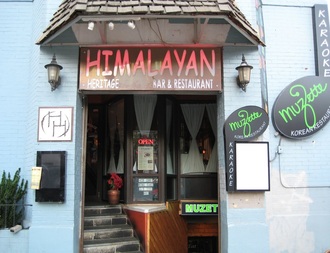 “Himalayan Heritage” restaurant
“Himalayan Heritage” restaurant
[Image stolen from here]
Now, this Indian restaurant has those cloth napkins you’re supposed to daintily put on your lap. Having those napkins is, of course, a way of saying “no shouting, please”. As J.F.’s latest story was crescendoing, M.F. and A.W.F. (two of the other CELTA classmates, sitting across from us) started to giggle and look embarrassed. M.F. gestured to J.F. to “quiet down”. The manager came over. In J.F.’s typical style, he proceeded to smoothly talk his way out of it. He immediately shook the man’s hand and started asking the man questions about his life, as if that were the natural and appropriate thing to do in this case. We all sat by, half-laughing at the absurdity of it.
After eating, we went to a nearby bar for a short time, and then A.W.F. had to leave us.
I suggested going to a karaoke bar, as several were nearby. I have good memories of them from South Korea (although in Korea, they are private “singing rooms”, not an open bar). The suggestion was jumped upon by the music-oriented M.H., who played professionally in a band. J.F. was all for it, too, and K.T. followed. The four of us soon entered one.
(Sidenote: A human was in charge of loading the songs. I wondered why. People could very easily punch in the codes by themselves for their songs. I realized why, when I saw that “tips” were obligatory. Having a human there coldly demanding “tips” for each song is just…a naked money grab. Think about it, fifteen songs per hour at $5+ per song, yikes, that’s $75/hour! Do that just two or three nights a week and you’re already past $1,000, for doing…nothing.)
At 11:30 PM, we left and walked together to the Metro. I continued on to the bus station, where I met my friend J.S. who had arrived about 11:50 PM. He was visiting me from Roanoke, Va., which kept me busy Saturday and Sunday…
This post is categorized (among others) under “Friends“. The fact is, though, that I didn’t know any of these people before the CELTA course started on February 3rd, just one month ago. The six of us became “friends”, at least for the duration. We are too different to actually be friends, I think, but we did share an intense experience together and came to appreciate each other, and feel a mutual connection; “we were all in it together”.
The Korean language has a word for this. That word is “Juhng” [정] a kind of emotional attachment based around recognition of shared experience and appreciation thereof, with more intense experiences yielding stronger juhng. See also post-50 and post-65 for my comments on this concept. (Note: This word is usually written today as jeong, but as I dislike this spelling and choose to use my own made-up transliteration in my own little forum here. Sorry to fans of the “jeong” transliteration. The pronunciation is like “young” but replacing the ‘y’ with our English ‘j’ sound.)
At one point, I tried to explain juhng to the others at our celebratory dinner, and how/why I thought we had it. Only A.W.F. seemed to get what I was saying.
I can only wonder if I will see any of these people much again, but I won’t forget them.
bookmark_borderPost-199: CELTA Last Day
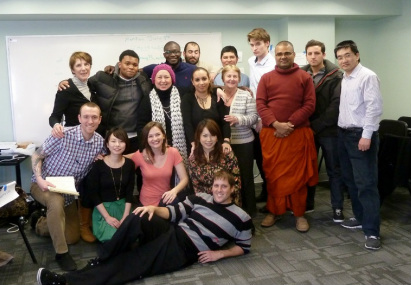
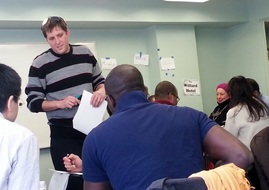 J.F. teaching in our last CELTA
J.F. teaching in our last CELTA
“teaching practice” session
Also pictured there are several “practice students” (from left): H.B.Y., a friendly Chinese man in his 30s; A.L., a Camerooni living in Madagascar on a longterm visit to the USA; B.K., a Buddhist monk-missionary from Sri Lanka; and in the corner is S.M. from Lebanon; we also see the back of A.S. from Japan’s head. (As you can tell, this lower-intermediate class was legitimately international. East-Asians were the biggest “bloc”, but only formed 25%-30% of the class, usually). Also pictured is the “Willard Hotel” sign I made to help with A.W.F.’s excellent final lesson (finding directions and sightseeing around Washington).
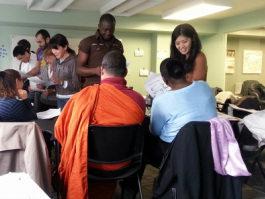 Students role-playing waiters and customers
Students role-playing waiters and customersFrom one of M.H.’s most successful lessons
If you ask me, J.F. got too subdued. I’d guess that he was sternly told by our first-half trainer to calm things down. He got the message and gradually cut out the energy that animated him in the early lessons. The lessons became better in a way (more focused) but at the cost of the fun. In the world of the Internet, if a real-life teacher cannot provide a dynamic classroom environment, why even have the teacher? Students can watch online videos for passive, detached learning.
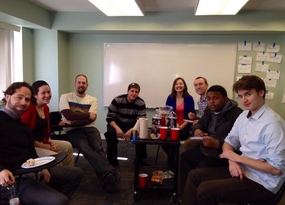 From l.: Trainers: R.P., C.K. / A., front desk guy.
From l.: Trainers: R.P., C.K. / A., front desk guy.CELTA trainees: J.F., A.W.F., M.H., K.T., Me.
Not pictured: S.R. (see #195).
The teaching was, as always, in the afternoon. I didn’t yet mention the morning. Back to that: Our last morning was marked by a lot of paper work, chitchat, writing of addresses, more chitchat, signing of documents, questions-and-answers about jobs, and then pizza.
At our suggestion, the two trainers, C.K. and R.P., agreed to eat lunch (pizza) with us. Snacks appeared (most from me, including Thai “chicken-flavored peanuts”, much-chuckled-about, that I got either in Malaysia or Thailand in November. The nuts smelled like popcorn but tasted okay). The drinks were flat Coke Zero and Pepsi Max, left over from the “taste test” I’d done in my last teaching session two days earlier. You can see the bottles there, on the cart that normally holds a projector. It was fun.
At one point before this, we had to make posters giving advice to future CELTA trainees. Here are ours:
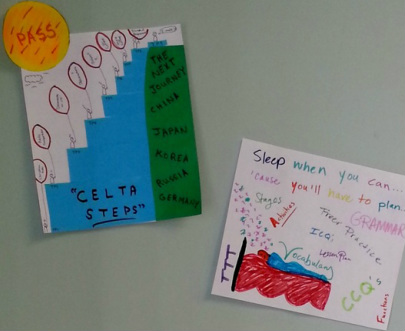 Advice to future CELTA trainees, in poster form
Advice to future CELTA trainees, in poster form
There are a series of steps (one for each “teaching practice”). A little character stands on each, looking up towards the next step. He holds a different balloon each time, with what we thought was helpful at that stage — i.e., something that would “lift” the guy to the next step, The first step is biggest, and that balloon says “C.K.”, our first trainer and current head of the Washington D.C. center (with whom I didn’t exactly see eye to eye on certain things). Another has the name of a useful grammar book, “Grammar in Use”. “R.P.” appears near the middle (he was our second-half trainer and very friendly/helpful/supportive). The little man has a few “zzz’s” in the middle steps. Accordingly, two of the balloons near the top say “coffee” and “more coffee”. The last ballon says “Triumph of Perseverance”. At the top, the little man says “I made it!”
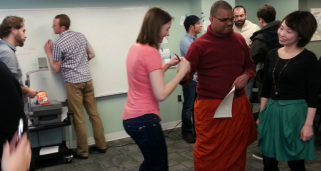 After the last class
After the last class
All that was left was to watch J.F.’s lesson. In the last slot, which would’ve been S.R.’s, we played a game all together, both students and teachers, competing for candy. He’d been the only teacher that day, so J.F. led the game with a return of that early energy (after the trainer had left!). The game was great, especially after the candy appeared.
Not long afterwards came the obligatory group picture:
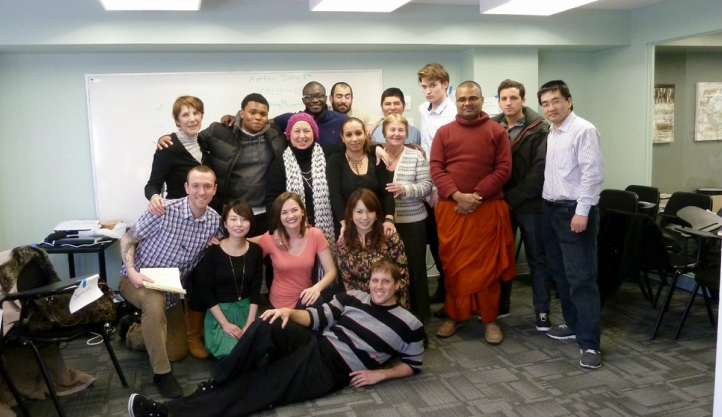
Back row, from left: L.T. from Ukraine, K.T. [a CELTA candidate] from Cameroon, A.L. from Cameroon, J.M. “Appletree” from Spain, J.C. from El Salvador, Me [CELTA candidate], Z.T. from Morocco, H.B.Y. from China.
Middle row: S.M. from Lebanon, M.E.M. from Morocco, V.P. from Bulgaria, B.K. from Sri Lanka.
Kneeling: M.H. [CELTA candidate] from Maryland, H.M. from Japan, A.W.F. [CELTA candidate] from Ohio, A.K. from Japan.
Laying down: J.F. [CELTA candidate] from…parts unknown.
Not pictured, students: M.S. from Japan (whom we also taught in the upper-intermediate class but she requested to be bumped down), F.V. from Senegal (a legally-deaf student, it seemed), A.S. from Japan (who at the moment of this picture was, I recall, for some reason sitting at the front desk — just feet off to the right behind the glass — discussing something).
Not pictured, teachers: S.R. from Ohio.
Continued with post-class activities:
Post-200 (“Celebrating CELTA in Himalayan Style”)

